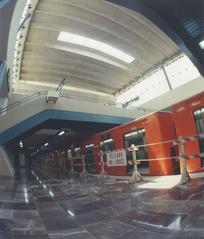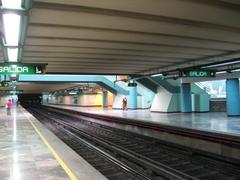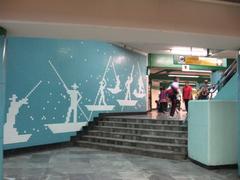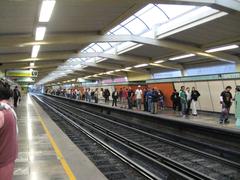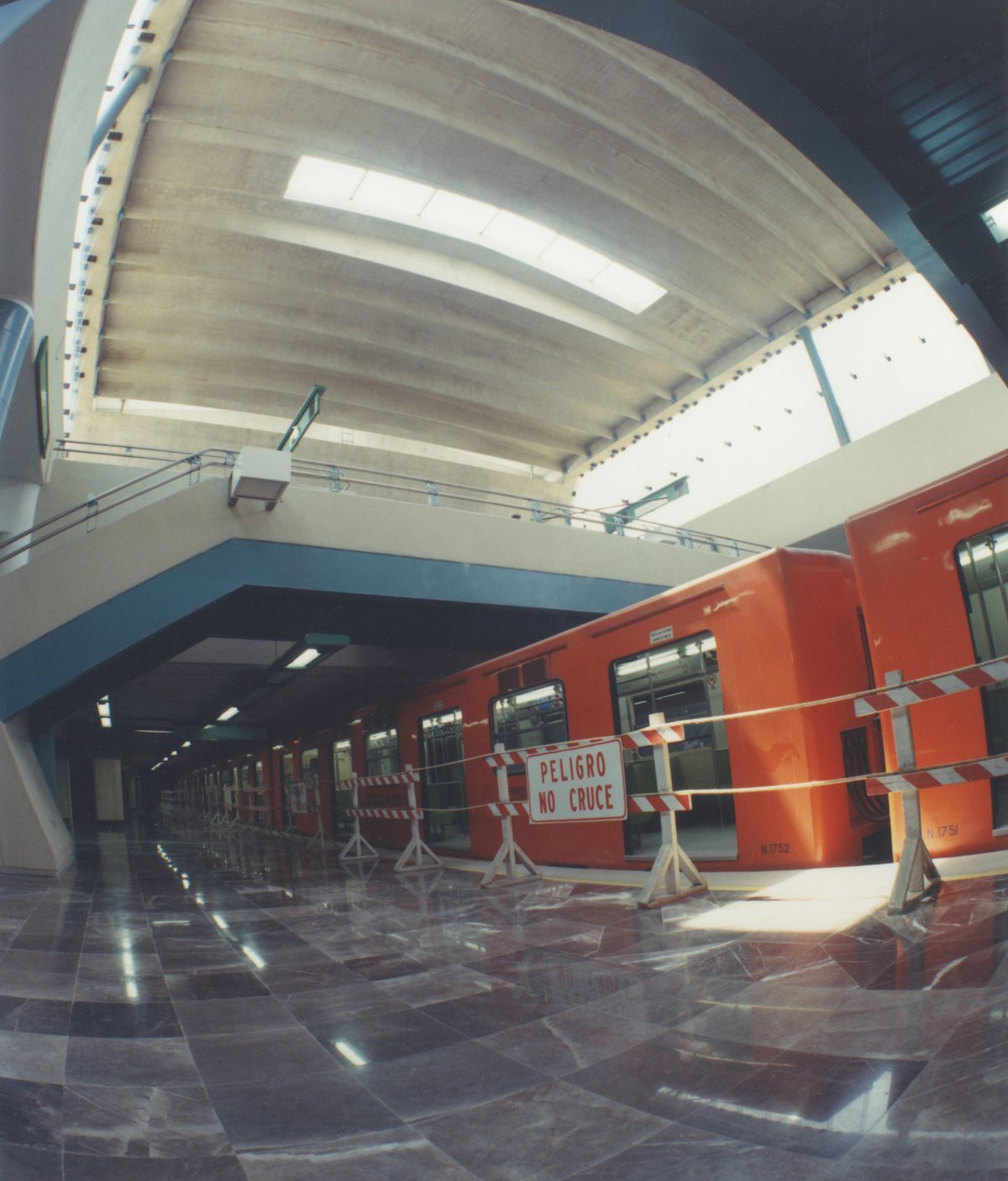
Santa Anita Mexico City: Visiting Hours, Tickets, and Historical Significance Guide
Date: 15/06/2025
Introduction to Santa Anita Mexico City
Santa Anita, located in the heart of Mexico City’s Iztacalco borough, stands as a living testament to the city’s deep indigenous roots and colonial heritage. Once known as Santa Anita Zacatlamanco Huehuetl, the neighborhood was a significant stop in the Mexica (Aztec) migration and flourished as a canal town vital for transporting flowers and agricultural goods via the famed Canal de la Viga. The neighborhood’s evolution under Spanish colonial rule brought architectural gems such as the Santa Anita Church, celebrated for its 18th-century Churrigueresque façade and beautifully preserved wooden altarpiece—a striking blend of indigenous and Catholic artistry (MexicoCity.cdmx.gob.mx).
Today, Santa Anita enchants visitors with its historic sites, lively markets such as Mercado Emiliano Zapata—famed for its tamales—and festive events including the Fiesta de las Flores and the feast of Santa Ana. Its walkable streets, public art at Metro Santa Anita station, and enduring community spirit make it a unique enclave within Mexico City’s urban landscape (Nomadic Matt; Discover Walks).
Easily accessible via Metro Lines 4 and 8, Santa Anita invites travelers to experience a confluence of pre-Hispanic ingenuity, colonial architecture, and vibrant local traditions. This guide presents essential visitor information, historical background, practical tips, visiting hours, ticketing, nearby attractions, and cultural insights to enrich your exploration of one of Mexico City’s most authentic neighborhoods (MexicoCity.cdmx.gob.mx; Wikipedia).
Historical Overview
Pre-Hispanic Origins
Santa Anita’s roots trace back to Nahua-speaking peoples and the legendary Mexica migration, documented in the Xólotl codex. As a canal town along the Canal de la Viga, the area’s chinampa agriculture and flower trade shaped the region’s identity (MexicoCity.cdmx.gob.mx; MexicoCity.cdmx.gob.mx).
Colonial Transformation
Spanish conquest brought Franciscan missionaries, who established a chapel to Saint Anne in 1554. The church’s 1777 renovation resulted in its stunning Churrigueresque façade and a renowned altarpiece—one of Mexico City’s best preserved, catalogued by INAH (MexicoCity.cdmx.gob.mx).
Canal Era and Urban Change
Santa Anita thrived as a canal town until urbanization in the 20th century led to the covering of canals, yet its historic charm survives around the church and in community events. The Mercado Emiliano Zapata remains a hub for traditional foods and social interaction (MexicoCity.cdmx.gob.mx).
Cultural Significance and Community Identity
Santa Anita is recognized as Iztacalco’s only “Pueblo Originario.” Its festivals, culinary heritage, and preserved architecture reflect a blend of indigenous and colonial traditions. The neighborhood’s layout, central plaza, and public mosaics at Metro Santa Anita reinforce its vibrant identity (MexicoCity.cdmx.gob.mx; MexicoCity.cdmx.gob.mx).
Visiting Santa Anita: Essential Information
Santa Anita Church Visiting Hours and Tickets
- Hours: Daily, 9:00 AM – 6:00 PM.
- Admission: Free; donations are appreciated.
- Guided Tours: Available by appointment; contact local offices for details.
- Photography: Permitted without flash.
Getting There
Santa Anita is reached via Metro Santa Anita (Lines 4 & 8), with nearby bus and Metrobús connections (Wikipedia).
Must-See Sites
- Santa Anita Church: Admire its Churrigueresque façade and historic interiors.
- Mercado Emiliano Zapata: Savor tamales and market fare.
- Metro Santa Anita Artworks: View murals and mosaics depicting local heritage.
- Casa de Cultura Las Jarillas: Enjoy exhibitions and events.
Accessibility
The area is mostly flat and walkable—though some streets are narrow or uneven.
Festivals
- Fiesta de las Flores: Annual celebration with decorated boats and parades.
- Feast Day of Santa Ana: July 26, features processions and traditional dances.
- Día de Muertos: Ofrendas and cemetery gatherings on November 1–2.
- Semana Santa: Passion plays and processions in spring (Discover Walks).
Local Customs and Etiquette
Santa Anita’s residents are proud of their heritage. When visiting:
- Show respect during religious events.
- Ask before photographing people or ceremonies.
- Use basic Spanish; most communication is in Spanish (Nomadic Foodist).
Food and Dining
Mercado Emiliano Zapata
A culinary highlight, open 7:00 AM – 6:00 PM, offering tamales, fresh produce, and traditional snacks (MexicoCity.cdmx.gob.mx).
Food tips:
- Choose busy, clean stalls.
- Carry small bills.
- Communicate dietary needs clearly.
Key Sights and Activities
- Santa Anita Monument and Arch: Commemorates the neighborhood’s canal-era past (MexicoCity.cdmx.gob.mx).
- Santa Anita Zacatlamanco Huehuetl: Annual Great Renewal Festival (March 21) with music and rituals.
- Calzada de la Viga: Pathway recalling the historic canal.
- Nearby Markets: Mercado Iztacalco, La Cruz Coyuya, and Jamaica Market.
Practical Tips
- Best Time to Visit: Morning to early afternoon for market activity; visit during festivals for cultural immersion.
- What to Bring: Comfortable shoes, sun protection, refillable water bottle.
- Money: Most transactions are in cash; tip vendors and service staff.
- Connectivity: Good mobile coverage; download offline maps.
Safety
- Santa Anita is safe by day; exercise standard urban precautions.
- Avoid isolated areas after dark.
- Use official transport (Nomadic Foodist).
- Consider travel insurance with medical coverage (Mexico Travel Secrets).
Accessibility
- Most streets are accessible, but expect occasional uneven pavement.
- The Metro station has basic accessibility features.
Nearby Attractions
- Mercado Juventino Rosas: Local market.
- Historic Center of Iztacalco: Architectural and cultural sites.
Frequently Asked Questions (FAQ)
Q: What are Santa Anita’s visiting hours?
A: Most sites open 7:00/8:00 AM – 6:00 PM; public spaces accessible at all times.
Q: Is there an entrance fee?
A: No; most attractions are free. Some cultural events may require tickets.
Q: How do I get there?
A: Metro Santa Anita (Lines 4 & 8), plus bus and Metrobús routes.
Q: Are guided tours available?
A: Yes; book through local agencies or at the market.
Q: Is it safe for tourists?
A: Yes, with normal safety precautions.
Visuals and Online Resources
Enhance your trip with interactive maps and virtual tours via official city and Audiala app resources. Include photos with descriptive alt text, such as “Santa Anita Monument and Arch historic entrance” or “Tamales at Mercado Emiliano Zapata.”
Summary and Visitor Recommendations
Santa Anita provides an immersive experience in Mexico City’s layered history and vibrant culture. From its indigenous and colonial roots to its lively markets and festivals, the neighborhood offers authentic encounters for all travelers. With free access to most sites, easy transport, and a welcoming community, Santa Anita is a rewarding and manageable destination.
For further information, download the Audiala app for guided tours and updates, and follow on social media for event news.
References
- MexicoCity.cdmx.gob.mx – Santa Anita Church
- Discover Walks – Mexican Traditions
- Nomadic Matt – Things to Do in Mexico City
- MexicoCity.cdmx.gob.mx – Mercado Zapata Santa Anita
- Wikipedia – Santa Anita Zacatlamanco
- UNESCO – Xochimilco Chinampa System
- Mexico City Official Guide
- MexicoCity.cdmx.gob.mx – Santa Anita Monument Arch La Viga
- Nomadic Foodist – Tips for Mexico City
- Mexico Travel Secrets – Is Mexico City Safe?
- Basado en Hechos Reales – Hechos históricos en Santa Anita
